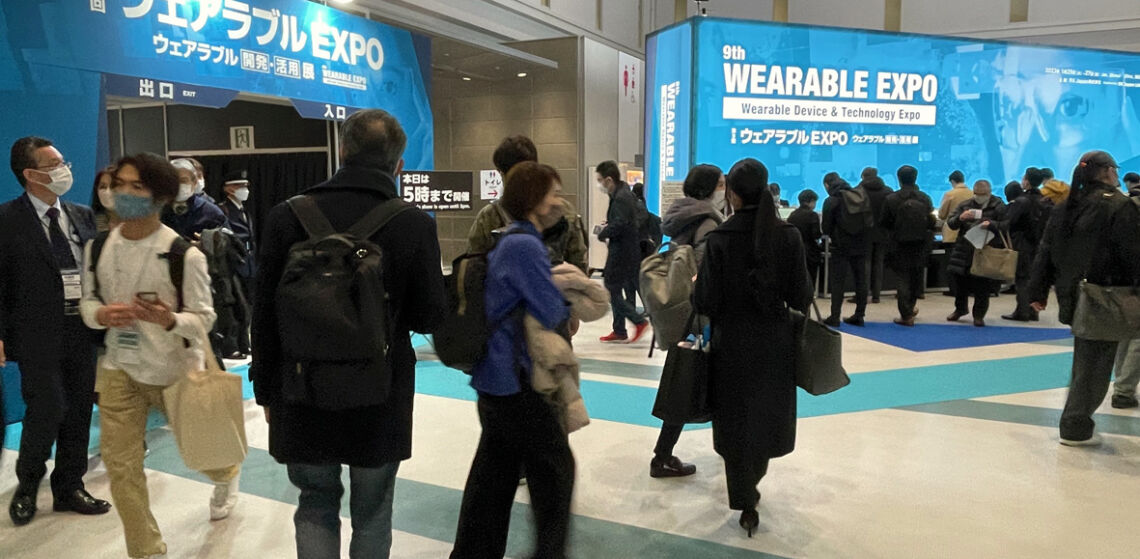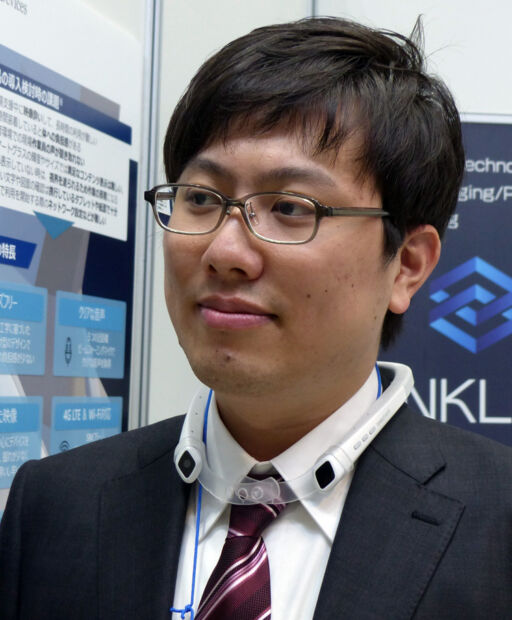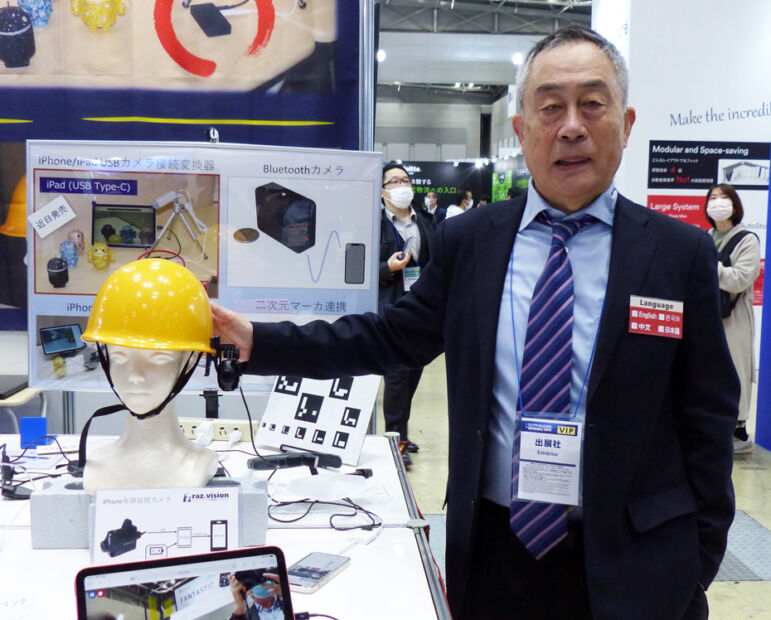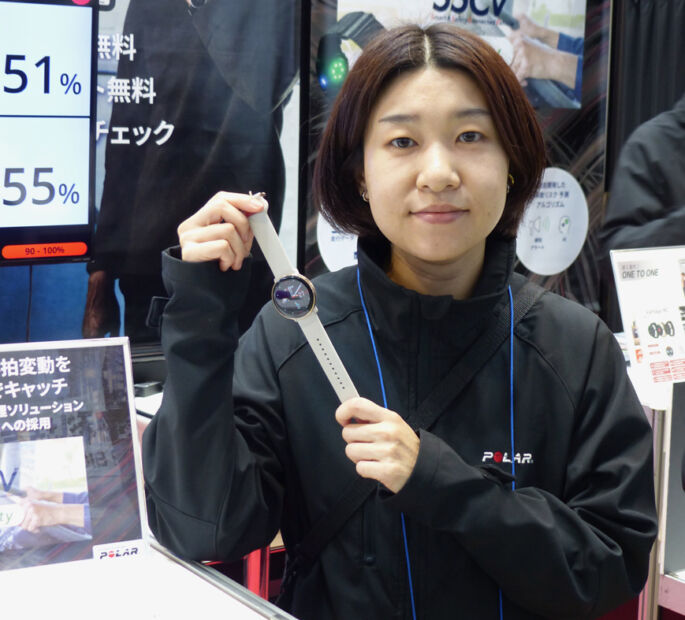What to wear in Japan
- January 31, 2023
- Steve Rogerson

Steve Rogerson took a walk round last week’s Wearable Expo show in Tokyo.
I was in Tokyo last week, actually there for the Automotive World gathering but I popped into a co-located event called Wearable Expo for a quick walk round. This was only a small show with around fifty exhibitors, but there was a wide variety of technology on display.
Noticeable were the number of wearables for special uses such as a necklace that can let you join Zoom and Microsoft Teams meetings while on the move. This means you can share what you can see with others.

This device was called Thinklet and was the main feature on the stand of Tokyo-based Fairy Devices. I stopped by for a chat with Yusuke Takano, who is in charge of the firm’s business promotion department.
“You wear it round your neck,” he said. “It has a camera, five microphones and speakers. It is for engineers. The built-in LTE connectivity makes it independent of a smartphone and it means you can communicate with a remote person.”
The firm developed the device about four years ago but it started taking off two years later when an app was introduced that allowed connectivity with Zoom and Teams.
Having the target as workplaces rather than consumer applications was a notable feature of the event. Is this the way wearables are going? Yusuke said this was mainly due to price.
“We are starting with the B2B area as this is an expensive device,” he said. “We can only make it more cost effective with mass production. Because of the price, we need businesses to adopt it. That is why our focus is workplaces for engineers.”
He said this was quite common in the wearables industry.
“Many devices are too expensive for consumers so the first customers will be workplaces,” he said. “In the future, with more demand from workplaces, this will lower prices for consumers.”

Another reason for the importance of this type of wearable is that Japan is facing a shortage of workers, according to Tsutomu Itoh, procurement manager at Yokohama-based Infinitegra. He likes to be called Thomas.
“Many good skilled workers have retired and the younger guys have less experience and knowledge,” Thomas told me.
This is why the company has developed a connected device to attach to the helmet of remote workers, mainly initially in the construction industry.
“The experienced guys at headquarters can help the young workers if they have a problem,” he said. “Also, if you are working on the 20th floor on a construction site, you can connect with the manager in the office on the ground. It also lets the boss deal with many people at the same time.”
The device will connect with Android or iOS and can record video onto a mobile device.
“We are concentrating purely on industrial applications,” said Thomas. “We asked businesses what they needed and we developed this accordingly. You can buy a camera in a shop, but you also need support. We can write the applications for you. This is what we are good at.”
Health wearables were obviously also a big part of the show, but I can’t help but think that we are reaching some form of market saturation. I mean, how many devices do we need that can measure your heart rate or sleep patterns?
To survive in such a market, I think these days you have to do something different. I asked a couple of companies at the show about this, and they were not over keen to comment as they were clearly me-too operators just trying to get a slice of the pie. But others were trying to spice the pie up a bit. Take Finnish company Polar for example.

I spoke with Sawako Omura, a marketing specialist at its Tokyo office. She said the firm had developed a technology that looked at the body’s autonomic nervous system (ANS), which helps regulate bodily functions such as heart and respiratory rates.
So, rather than looking just at heart rate and sleep patterns, Polar’s device calculates two separate metrics – ANS charge and sleep charge. The combined result gives guidance on sleep quantity and quality.
“Garmin can’t do what we can do,” said Sawako. “They can monitor your sleep but can’t do ANS analysis. We are the only company that can measure this. This makes a big difference compared with other companies. Our sleep monitor is the best there is.”
Another product that caught my eye was a portable radiation detector from Korean firm JS Techwin, but I kept my distance from that stand as I didn’t really want to get too close just in case they had something there to show how well it worked. They almost certainly didn’t, but at my age I like to play safe.





